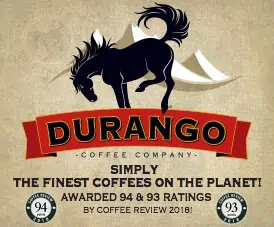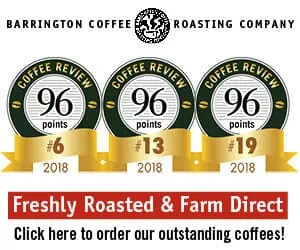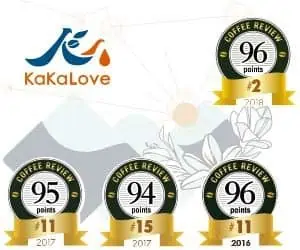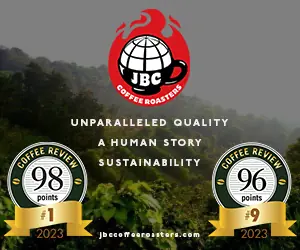What is a “breakfast blend”? The word and the idea come from a seemingly long-gone era in America when pancakes, diners and endless refills were the norm rather than quaintly retro exceptions. In 2006, what can American specialty coffee consumers expect from the term – and from the coffees?
If the twenty-six nominal breakfast blends I sampled this month in collaboration with distinguished cupper Danny O’Neill of The Roasterie are any indication, “breakfast blend” today means about the same thing it meant thirty years ago: a medium-roasted blend containing coffees that are gently but not overbearingly acidy, balanced, intended to be enjoyed black or with just a touch of milk and sugar, but in any case refreshing and delicate enough to sustain multiple refills and complement heavyish eggs-and American breakfasts.
Surprisingly True to Tradition
True, several of these twenty-six nominal breakfast blends arrived dark-roasted. In the heyday of breakfast blends, dark roasting was a practice relegated mainly to “after dinner” coffees, those coffees meant to punctuate the conclusion of a dinner rather than wash down a hearty breakfast or complement lunch. Today, of course, dark-roasting is the all-day, all-purpose specialty coffee norm in most parts of the United States, so it comes as no surprise that some of these breakfast blends arrived with a darkish sheen.
However, the great majority not only were medium-roasted, but were rather traditional in design. They clearly aimed at balance rather than intensity, with a touch of the tart sweetness coffee professionals call acidity, but not so much as to compete with the orange juice or distract from the pancakes.
Blending Outside the Box
Nevertheless, there were subtle signs of change. Traditional American breakfast blends were dominated by the familiar, relatively straightforward sensory profiles of Latin American coffees: Colombia, Central America, Brazil. Many of these 2006-edition blends, however, reflect the new cosmopolitanism of the specialty coffee world. I tasted hints of the malty, musty character of traditional Indonesian coffees in some, for example, and the full-throated fruitiness of East Africa in others.
In particular, the sweetly fermented blueberry, cherry and brandy notes of dry-processed Ethiopian coffees made their ripe, some would say overripe, presence known in several of these 2006-edition breakfast blends. Using these creatively fermented coffees is always tricky, as one person’s lushly ripe fruit flavor is another person’s fished-out-of-the-compost-pile fruit flavor.
Fruity or Fermented?
The degree to which these exotic coffees influenced flavor profiles also appeared to influence some of the discrepancies in ratings between me and Danny O’Neill, my collaborator on this article. Danny, and his cupping partner at the Roasterie, Norm Hill, appeared to welcome some ripe fruitiness in these blends, but were ready to severely punish coffees that slid too far toward the fermented end of the ripeness scale. On the other hand, I’m rather tolerant of the edgy, wine-like fruitiness of such dry-processed or “natural” Ethiopia coffees, willing to reward them if they show enough rich, fruity excitement at the front to offset what is often (though not always) a mildly astringent or over-ripe, slightly composty finish.
Our votes ran the other way for one blend, the Supreme Bean breakfast blend, in which a sweet, very mild musty or mildewed character read as chocolaty and buttery to Danny, but read as, well, musty and mildewed to me.
Consensus on Classic
We did unite in our admiration of the three top-rated coffees, however. The breakfast blends from Steep & Brew and Coffee Klatch were classic in their profile, balanced, cleanly fruity, with a delicately refreshing, sweet acidity. The Madrugada (Spanish for “dawn”) blend from Flying Goat displayed more than a touch of ripe fruitiness, but apparently stayed enough on the clean side of ripe to attract a favorably rating from Danny and Norm as well as from me.
2006 The Coffee Review. All rights reserved.










